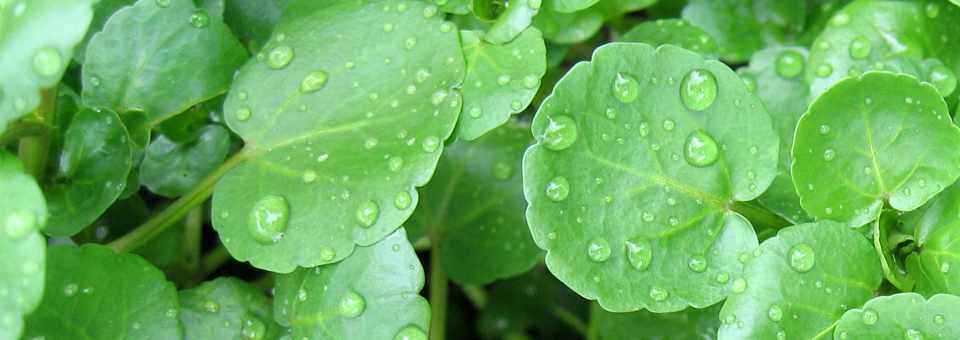When I was in Bali, I learned that elephants – which are well known for their long and impressive memories – go to great lengths to seek out gotu kola leaves.
It’s one of their favorite foods.
Could this plant be the reason why elephants never forget?
Who knows?
What we do know is that research proves gotu kola can enhance your brain power.
Let me explain…
For decades, scientists believed that the adult human brain couldn’t grow new brain cells.
They thought we were born with all the brain cells we’ll ever have – and that when they were gone, they were gone for good.
However, a breakthrough study by researchers at Princeton University proved the opposite.
That study, published in the prestigious Journal of Science, revealed the continuous growth of new brain cells in adult macaque monkeys.
Then, a follow-up study published in the journal Cell found that humans also produce new neurons.
And that – even in old age – your brain still produces around 700 new neurons a day.[i]
In other words, despite what “medical experts” may tell you, your memory and cognitive performance don’t have to decline.
In fact, they can actually improve as you age.
And one of the best ways to boost your brain performance is with gotu kola, or Centella asiatica.
Research shows it can revitalize your brain and nervous system and help you feel sharp and alert as it recharges your memory.
In a number of studies, gotu kola enhanced memory performance, problem-solving abilities, intelligence, and mental energy.[ii]
A landmark study published in the Journal of Pharmacy and Pharmacology
found that gotu kola stimulates the growth of brain cells…[iii]While additional studies proved that gotu kola: [iv],[v],[vi],[vii]
- Improves cognitive function – even in cognitively impaired older adults
- Doubles how quickly and accurately you process information
- Increases problem-solving skills up to 45%
- Improves reading skills up to 29%
- Significantly boosts your attention span
- Increases concentration
Further studies also give us lots of evidence that gotu kola is a powerful antioxidant and brain protector, as well as a nerve growth factor.
Studies show it may also help stop plaque formation in Alzheimer’s disease and prevent dopamine neurotoxicity in Parkinson’s.[viii],[ix]
I’ve recommended gotu kola for years as a way to treat stroke victims suffering from stroke-related dementia. A recent study backs up what I learned from traditional healers…
According to this study from Indonesia, where gotu kola is used commonly in both traditional and mainstream medicine, concluded that therapy with an extract of the herb at 750 mg per day for six weeks was “effective in improving cognitive impairment after stroke.”
The extract is called TTFCA, which stands for triterpenic fraction of Centella asiatica. This contains gotu kola’s most potent components. And it has shown special strength in improving memory.[x]
Other studies have shown gotu kola is highly effective at preventing strokes in the first place – by promoting healthy veins and combatting high blood pressure. TTFCA improves the dilatation of blood vessels, which decreases blood pressure and improves blood flow throughout your body – from the largest veins to the tiniest of capillaries.[xi]
When choosing a gotu kola supplement, look for one with more of the active components. Choose one that is standardized to the asiaticosides or asiatic acid.
3 Ways You Can Improve Your Memory With Gotu Kola
I recommend my patients use gotu kola in three ways.
- As an extract. Take 10 to 20 ml per day.
- As a supplement. When choosing a gotu kola supplement, look for one with more of the active components. Select one that is standardized to the asiaticosides or asiatic acid. I recommend taking 300 mg a day.
- As a dried herb. One of my favorite ways to use gotu kola is by making a cup of tea. Here’s how:
- Measure 1 to 2 teaspoons (about 6 to 8 grams) of dried gotu kola into a cup.
- Cover with boiling water and allow to steep for 15 minutes.
- Strain, then sweeten with organic honey. Enjoy three cups a day.
[i] Spalding K, et al. “Dynamics of hippocampal neurogenesis in adult humans.” Cell. 2013 Jun 6; 153(6):1219–1227.
[ii] Prakash A, Kumar A. “Mitoprotective effect of Centella asiatica against aluminum-induced neurotoxicity in rats: possible relevance to its anti-oxidant and anti-apoptosis mechanism.” Neurol Sci. 2013 Aug;34(8):1403-9.
[iii] Soumyanath A, et al. “Centella asiatica accelerates nerve regeneration upon oral administration and contains multiple active fractions increasing neurite elongation in-vitro.” J Pharmacy Pharmacol. 2005;57(9):1221–1229.
[iv] Shinomol GK, et al. “Exploring the role of ‘Brahmi’ (Bacopa monnieri and Centella asiatica) in brain function and therapy.” Recent Pat Endocr Metab Immune Drug Discov. 2011;5(1):51-57.
[v] Xu Y, et al. “Gotu kola (Centella Asiatica) extract enhances phosphorylation of cyclic AMP response element binding protein in neuroblastoma cells expressing amyloid beta peptide.” J Alzheimers Dis. 2008 Apr;13(3):341-9.
[vi] Tiwari S, et al. “Effect of Centella asiatica on mild cognitive impairment (MCI) and other common age-related clinical problems.” Dig J Nanomater Bio. 2008;3:215–220.
[vii] Wattanathorn J, et al. “Positive modulation of cognition and mood in the healthy elderly volunteer following the administration of Centella asiatica.” J Ethnopharmacol. 2008;116(2):325-332.
[viii] Orhan I. “Centella asiatica (L.) Urban: From traditional medicine to modern medicine with neuroprotective potential.” eCAM. 2012;2012:946259.
[ix] Xu Y, et al. “Gotu Kola (Centella Asiatica) extract enhances phosphorylation of cyclic AMP response element binding protein in neuroblastoma cells expressing amyloid beta peptide.” J Alzheimers Dis. 2008 Apr; 13(3):341-9.
[x] Farhana KM, Malueka RG, et al. “Effectiveness of gotu kola extract 750 mg and 1000 mg compared with folic acid 3 mg in improving vascular cognitive impairment after stroke.” eCAM. 2016: 2795915.
[xi] Incandela L, et al. “Total triterpenic fraction of Centella asiatica in chronic venous insufficiency and in high-perfusion microangiopathy.” Angiology. 2001 Oct.;52 Suppl 2:S9-13.

